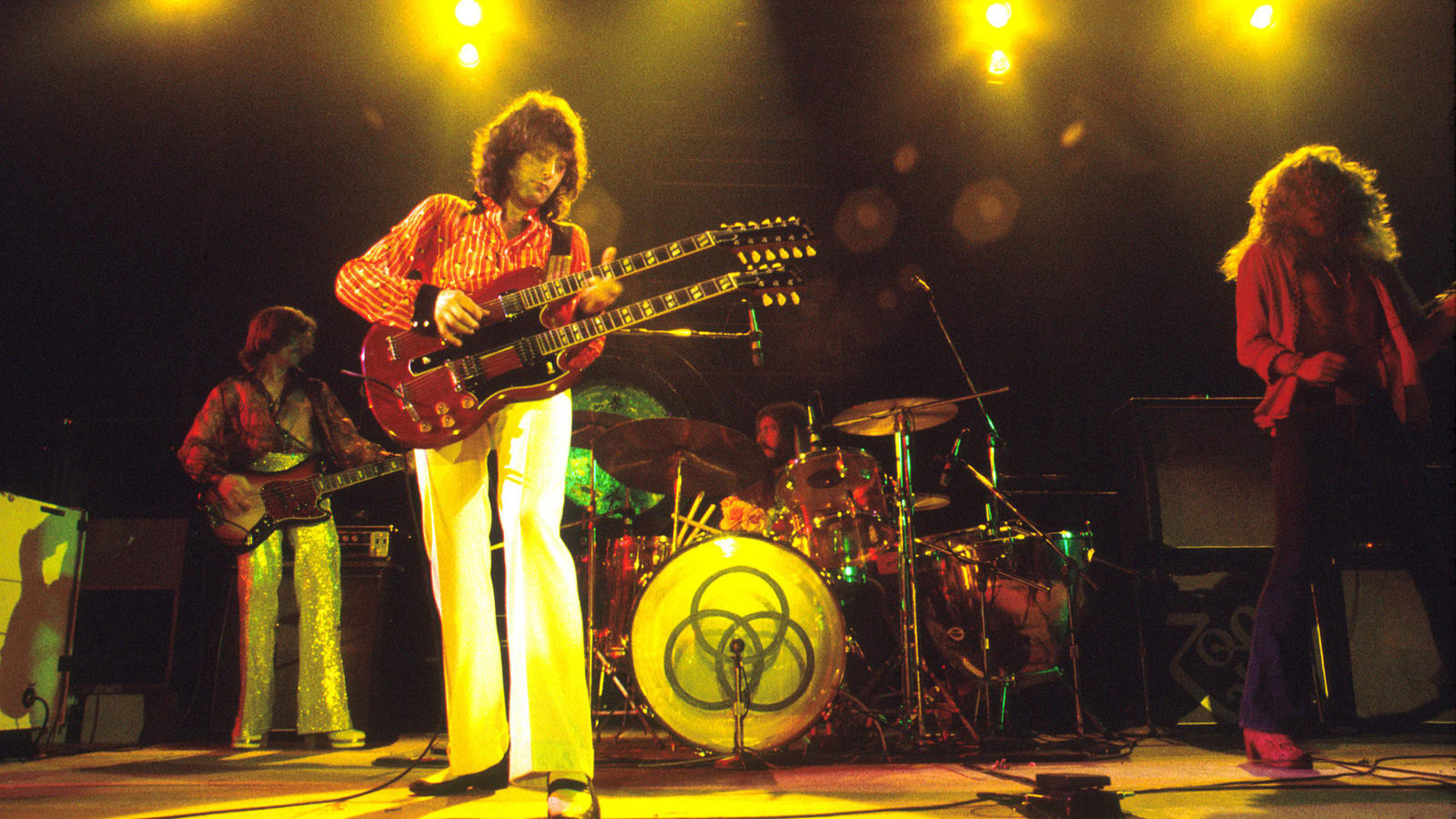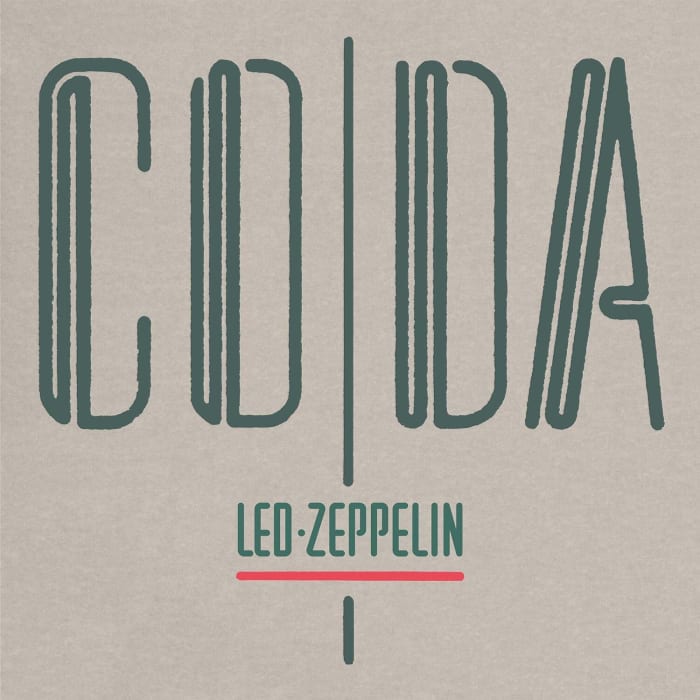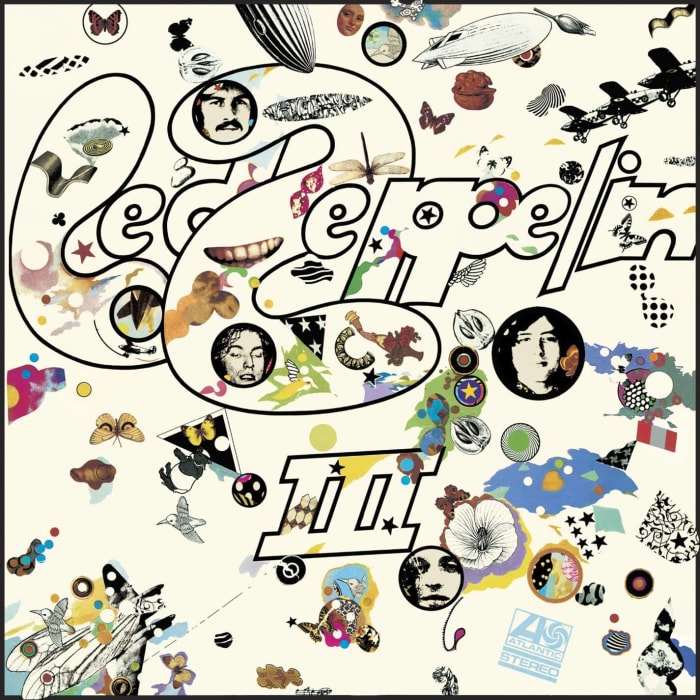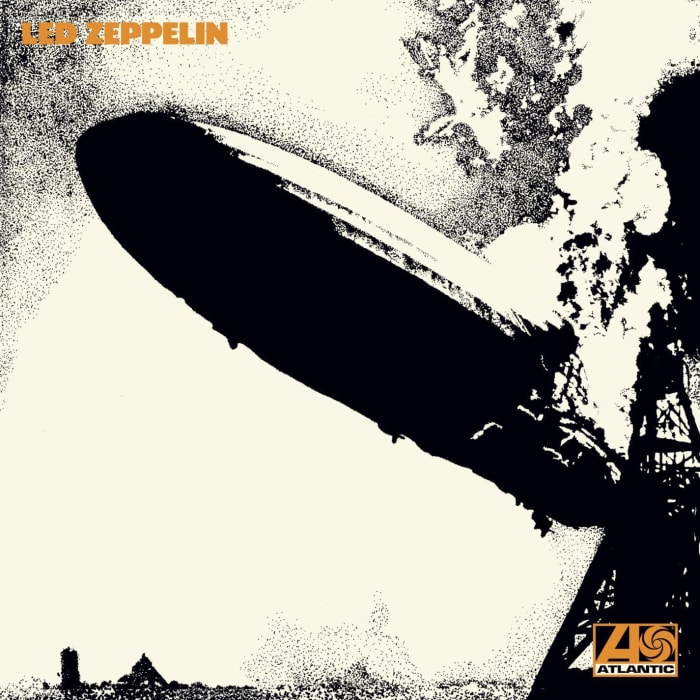In truth, Led Zeppelin never dominated the charts, but thanks to classic rock radio and satellite options, its legendary status remains stronger than ever. So, what constitutes a Zeppelin deep cut? There really are no rules, but here's our top 20.
20. "Black Mountain Side" (1968)
Led Zeppelin
The musicianship within the confines of Led Zeppelin is obviously the stuff legends are made from. "Black Mountain Side" is a simple folksy instrumental track composed by the great Jimmy Page that is truly a hidden gem on the band's self-titled debut. For many music fans, instrumental pieces tend to bore, but this is one such song that we can listen to for days and never tire.
19. “The Crunge” (1973)
Michael Ochs Archives/Getty Images
Led Zeppelin's attempt at producing a funk-rock song might not have hit with every fan. However, this ditty from 1973's Houses of the Holy is unique if anything else. And, while it's easy to dismiss when talking about strong moments within the Zeppelin catalog, "The Crunge" has the ability grow on one's ears. This, in our minds, is the epitome of a deep cut, and a fun moment on what might be the band's most experimental record.
18. "Hots on for Nowhere" (1976)
Led Zeppelin
The lone representation from 1976's Presence, "Hots on for Nowhere" is an unheralded cut from a seriously mediocre Zeppelin record. According to Songfacts , Robert Plant wrote the song while recuperating from injuries following a car accident. He speaks of isolation from the outside world, and even those within the band's little world. "Hots on for Nowhere" is undeniably Led Zeppelin, bouncy and we can even more than tolerate the frequent choruses of "Lalalalalalalalaa."
17. "Carouselambra" (1979)
Led Zeppelin
There are not many Led Zeppelin songs where John Paul Jones outshines Jimmy Page. However, this epic, 10 1/2-minute parade of sound features some marathon synthesizer work from Jones, whose presence is the highlight of this In Through the Out Door track. But Page fans should not fret, as he too delivers a strong guitar effort that counterbalances Jones' exemplary musicianship. "Carouselambra" was never really a hit with critics, but it does tend to have a soft spot in the ears of Zeppelin fans.
16. "Since I've Been Loving You" (1970)
Led Zeppelin
Led Zeppelin
There's an argument to be made that "Since I've Been Loving You" might not necessarily be a true Led Zeppelin deep cut. It has been lauded by fans and critics as one of the group's most noteworthy songs, especially of the blues variety. It features one of Jimmy Page's best guitar solos, fusing that aforementioned blues vibe with unabashed, hard-driving rock. Oh yeah, Robert Plant's vocal range has never been better on a priceless tune from Led Zeppelin III that deserved more notable praise at the time, and even today.
15. "Ozone Baby" (1982)
Led Zeppelin
Some straightforward rock from the Zeppelin. Found on 1982's Coda compilation, released nearly two years after the band officially broke up. "Ozone Baby" is one of several outtakes over the course of the group's history that surface on the record, and fits a mini-theme of harder, edgier songs from Zeppelin. In this case, it seemed the band was adapting to the times where punk and refined, mainstream arena rock were prominent in both the United Kingdom and United States. The effort is certainly worth a listen.
14. "In the Light" (1975)
Led Zeppelin
At nearly nine minutes in length, "In the Light" is quite an ambitious piece of music, and a commitment to the ears. Like some other Zeppelin tunes on this list, "In the Light" can be somewhat of an acquired listen. However, this addition in 1975's double-album Physical Graffiti happens to be some of bassist John Paul Jones' most thorough and creative compositions with the band. Jones' stellar synthesizer work is another example of his underrated talent within the confines of the group.
13. “Bron-Yr-Aur” (1975)
Led Zeppelin
From the epic journey that is the aforementioned "In the Light," to the little-more-than-two-minute "Bron-Yr-Aur" tender instrumental. Also from Physical Graffiti, which only further exemplifies the complexity and range of that record, this splendid Jimmy Page's acoustic number is named after — and essentially is a modest homage — to the Welsh cottage retreat that he and Robert Plant fancied to work on their music for the band.
12. "Down by the Seaside" (1975)
Led Zeppelin
As we'll see, Led Zeppelin had a definite folk/country influence that was highly evident during the band's work from the first half of the 1970s. This Physical Graffiti resident fits both bills and is one of the more underrated moments on the record. According to 1994's The Complete Guide to the Music of Led Zeppelin, "Down By the Seaside" apparently throws a nod to Neil Young, for the song's acoustic-electric yin-yang that should cater to just about any fan of the legendary band.
11. "That's the Way" (1970)
Led Zeppelin
The musical uniqueness of 1970's Led Zeppelin III album isn't always noted. In fact, there are some die-hard fans of the group who considered it to be muddled. However, it can be argued that the best part of the record are those ample acoustic, folksy moments. Like "That's the Way," which also showcases the beauty that is Robert Plant's vocal performance. Certainly one of the more underappreciated moments in the Led Zeppelin musical arsenal.
10. "Boogie With Stu" (1975)
Led Zeppelin
Another track from Physical Graffiti , a rollicking number with a 1950s' rock feel. Then again, it should, considering it was inspired by Ritchie Valens' "Ooh My Head." After some legal controversy, the Valens estate received a writing credit for a song that began as jam session with renowned, longtime Rolling Stones piano Ian Stewart — the "Stu" in the title of the song. "Boogie With Stu" was originally recorded during the early 1970s, during the sessions for Led Zeppelin IV, but never saw an album spot until four years later.
9. "The Wanton Song" (1975)
Led Zeppelin
"The Wanton Song" is another reason why John Bonham just might be the best rock drummer of all time. Though not to the level of such Zeppelin classics featuring Bonham at his best (like "Rock and Roll" and "Moby Dıck"), "The Wanton Song" is a seriously entertaining romp that initially began as jam session, but after maturing and progressing, found a home on Physical Graffiti. In addition to Bonham's brilliance, Jimmy Page's unique and creative guitar work is another highlight of the track.
8. "Your Time Is Gonna Come" (1969)
Led Zeppelin
Another underappreciated moment from the band's first album. Beginning with John Paul Jones' cathedral-like intro on the Hammond M-100 organ (with is underlaid throughout the song). It's a rather beautiful piece that also showcases Jimmy Page's brilliance on the both the acoustic and pedal steel guitar. For die-hard Zeppelin fans, this is not an unfamiliar track, but should be considered among the best that the first record has to offer.
7. "Tangerine" (1970)
Led Zeppelin
Perhaps it's not discussed enough how Led Zeppelin's folk roots influenced the foundation of the band's collective sound. From Led Zeppelin III, "Tangerine" is a perfect example of that notion. From the acoustic beginning to the plugged-in strength that dominates the middle of the track to the country twang (more brilliant steel guitar work from Jimmy Page), "Tangerine" is a true gem on a record that has a lot going on from a musical standpoint.
6. "In the Evening" (1979)
Led Zeppelin
5. “Wearing and Tearing” (1982)
Led Zeppelin
Talk about heavy. Yes, Led Zeppelin provided an early format for heavy metal, but who knew the boys had a punk streak in them. Well, here's the proof. Another inclusion from Coda, "Wearing and Tearing" is relentless, and fueled like something fit for Motorhead and not late-in-its-career Led Zeppelin. "Wearing and Tearing" was recorded during the sessions for In Through the Out Door, but didn't make the cut. Including this blistering piece on the final compilation, however, was brilliant.
4. "The Rover" (1975)
Led Zeppelin
There's a certain 1970s, arena rock vibe, mixed with some new wave flare that soon would have its moment later in the decade and into the early 1980s, to this glorious rock romp. Overall, this is an exceptional, bustling rock song whose enjoyable heaviness proved that Zeppelin — and Jimmy Page, more specifically — could still shred. One of the true standout moments from Physical Graffiti, the track never enjoyed consistent radio airplay, but when there's a need to get the Led out, "The Rover" is a must-listen.
3. "Night Flight" (1975)
Led Zeppelin
By now it should be obvious that we fancy the work of Physical Graffiti. "Night Flight" might be the one track from the record that doesn't get talked about — or praised — enough. It's far from a complex song, and pretty much straightforward in the standard of Zeppelin rock. It's roughly 3 1/2 minutes of pure musical joy, with a bluesy tinge and some stellar work from John Paul Jones, and Robert Plant's voice is as strong as ever. A true hidden gem that can compete with not just any track from Physical Graffiti, but anything in the band's legendary category.
2. "What Is and What Should Never Be" (1969)
Led Zeppelin
From Led Zeppelin's second album, this is among the best tracks on the release. And though critics have long hailed "What Is and What Should Never Be" as one of Led Zeppelin's best tracks, it sadly never seemed to enjoy mass popularity, mostly because it remains overshadowed by Led Zeppelin II tracks like "Whole Lotta Love" and "Moby Dıck." From the pages of Hammer of the Gods: The Led Zeppelin Saga, this underrated work from Led Zeppelin II includes lyrics regarding Robert Plant's reported relationship with his sister-in-law.
1. "Ten Years Gone" (1975)
Led Zeppelin
When classic rock fans think of Zeppelin's Physical Graffiti album, they usually go to "Kashmir" or maybe "Custard Pie." But many dedicated Led Zeppelin supporters will offer this melodic, "hypnotic" ballad as the best the record has to offer, and perhaps one of the standout moments in entire Led Zeppelin catalog. According to Zeppelin lore, guitarist Jimmy Page intended it to be an instrumental piece before Robert Plant's memory of an old girlfriend inspired the lyrics. As far emotional tracks go, this is perhaps Led Zeppelin's best.

 +
+




























